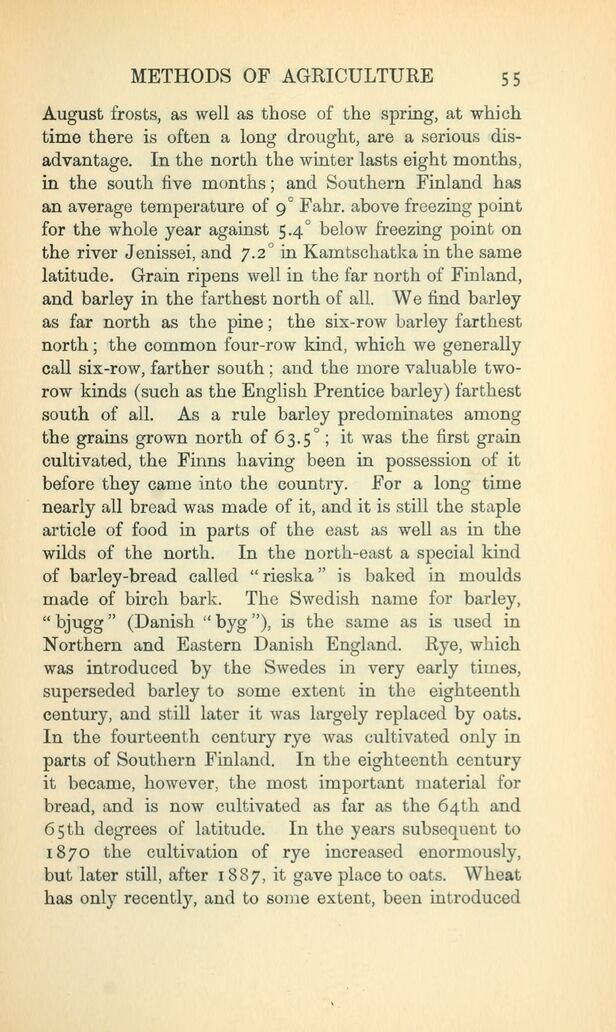
Full resolution (JPEG) - On this page / på denna sida - IV. Methods and Conditions of Agriculture

<< prev. page << föreg. sida << >> nästa sida >> next page >>
Below is the raw OCR text
from the above scanned image.
Do you see an error? Proofread the page now!
Här nedan syns maskintolkade texten från faksimilbilden ovan.
Ser du något fel? Korrekturläs sidan nu!
This page has been proofread at least once.
(diff)
(history)
Denna sida har korrekturlästs minst en gång.
(skillnad)
(historik)
August frosts, as well as those of the spring, at which
time there is often a long drought, are a serious
disadvantage. In the north the winter lasts eight months,
in the south five months; and Southern Finland has
an average temperature of 9° Fahr. above freezing point
for the whole year against 5.4° below freezing point on
the river Jenissei, and 7.2° in Kamtschatka in the same
latitude. Grain ripens well in the far north of Finland,
and barley in the farthest north of all. We find barley
as far north as the pine; the six-row barley farthest
north; the common four-row kind, which we generally
call six-row, farther south; and the more valuable
two-row kinds (such as the English Prentice barley) farthest
south of all. As a rule barley predominates among
the grains grown north of 63.5°; it was the first grain
cultivated, the Finns having been in possession of it
before they came into the country. For a long time
nearly all bread was made of it, and it is still the staple
article of food in parts of the east as well as in the
wilds of the north. In the north-east a special kind
of barley-bread called “rieska” is baked in moulds
made of birch bark. The Swedish name for barley,
“bjugg” (Danish “byg”), is the same as is used in
Northern and Eastern Danish England. Rye, which
was introduced by the Swedes in very early times,
superseded barley to some extent in the eighteenth
century, and still later it was largely replaced by oats.
In the fourteenth century rye was cultivated only in
parts of Southern Finland. In the eighteenth century
it became, however, the most important material for
bread, and is now cultivated as far as the 64th and
65th degrees of latitude. In the years subsequent to
1870 the cultivation of rye increased enormously,
but later still, after 1887, it gave place to oats. Wheat
has only recently, and to some extent, been introduced
<< prev. page << föreg. sida << >> nästa sida >> next page >>